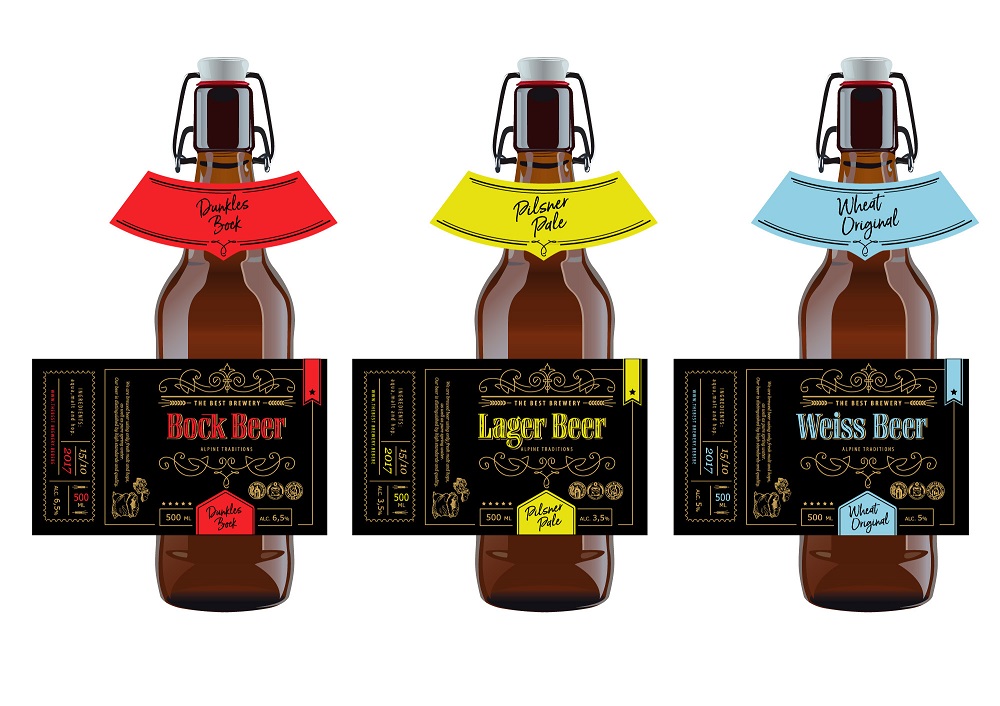S2K Commerce - Products Dropdown
Web Content Viewer
Designing the Perfect Beer Bottle Label

Designing labels for any kind of product you produce regularly is naturally an important task, and a great example here is anyone looking for a great label design for their new beer bottles. Whether you're an established beer manufacturer adding a new product line or you're starting up a new home brewing business and designing your first label, what should you be thinking about as you move forward?
At Industrial Container and Supply Company, we're happy to play one key role here: Providing clients with a wide range of plastic and glass bottle types, including many glass beer bottle options for you to choose from. What are some general tips we often provide to new clients in the beer bottle realm about how to design labels, both in terms of the physical contours of our bottles and several related areas? Here are some basic tips on designing the perfect beer bottle label.
Can or Bottle?
First and foremost, decide whether you'd like your beer packaged in cans or glass bottles. This decision alone can be a make-or-break factor in terms of overall label design and aesthetic. For instance, if you opt for the classic glass bottle shape, it will often require more detailed labels with die cut shapes that fit onto the curved surface of a bottle - however, if you choose cans, the labels often need to be minimalistic yet eye-catching.
For the rest of this blog, we'll operate using beer bottles as our hypothetical example. In most cases, however, the concepts we'll discuss apply to both cans and bottles alike.
Knowing the Contours of Your Bottle
Before we dig into certain branding and design tips, it's important to note that the physical features of any bottle you choose will have a direct impact on the kind of label design you create. This is true in general for most products, but especially so with beer bottles due to their curvature and contours.
Therefore, we recommend that you select a specific bottle type first before beginning your label design process. You might even want to acquire multiple sample bottles in order to test and view how certain labels look when wrapped around the bottle surfaces.
Once you've chosen a bottle, consider its specs and then use that knowledge to inform your label design decisions. This includes any areas of the bottle where contact would be limited due to curvature or other features, which might be a good place to avoid placing any key text or logos.
Basic Brand Identity
Once you have a clear baseline on your bottle type and physical specs, you can then move onto crafting a basic brand identity. This includes visual elements such as logos and fonts that will be used for the label itself and across any other marketing materials.
If you're already an established beer brand, then you likely already have this type of brand identity in place - and the key here is finding the right ways to apply it to your label. If you're a newer brand, however, then creating a basic identity is essential - and it begins with two key elements:
1) Logos: Start by selecting the right logo that best represents your brand and its core values. Depending on what type of beer you produce, there are plenty of creative ways to express this visually and you can even look to other beer brands for inspiration.
2) Fonts: After selecting a logo, the next step is picking out the right font that best encapsulates your brand identity. Bold fonts have a tendency to work well here, as do those with slightly more ornate flourishes - but again, there's plenty of room for creativity and you can mix up font combinations to find the right fit.
Protection from Light and Oxygen Exposure
Two areas that relate to both your label and the bottle itself involve protection from light and oxygen exposure, both of which can cause damage over time if they're allowed to seep in. To prevent this, consider adding a few extra layers to your label design that provide some additional shield from these elements - such as using textured or raised ink.
You might even want to completely wrap the bottle with special shrink-sleeve labels that cover all sides and create the illusion of a single continuous label. This often adds to the overall impact of the design, especially if you're combining multiple colors or patterns in your design.
Know Your Target Audience
Beer manufacturers are targeting more than just "people who drink beer" with their labels. They are targeting specific demographic groups, including craft beer aficionados and young adults who enjoy certain flavors or styles of beer. And the label design should reflect that target audience.
Therefore you might want to consider using colors, text, and logos that can appeal to a specific demographic. Additionally, consider the overall look of your label - does it seem sophisticated enough for a more refined audience, or does it have a more playful feel to engage younger beer drinkers?
Ensuring Legal Requirements
Finally, those producing alcoholic products in the US must adhere to certain legal regulations - and this is something you'll want to keep in mind when designing labels. This includes both federal requirements such as including the Alcohol and Tobacco Tax and Trade Bureau's health warning statement, as well as any state or local regulations that might be applicable.
It's important to research these aspects early on in the design process, as they might directly influence any decisions you make and could potentially require different label versions depending on where your beer is being sold.
For more on how to design the ideal label for your new beer bottles, or to learn about any of our bottle, can or other container needs, speak to our team at Industrial Container and Supply Company today.
